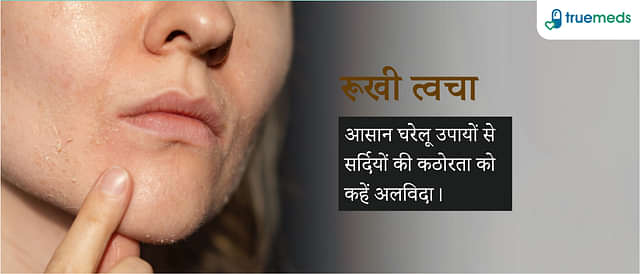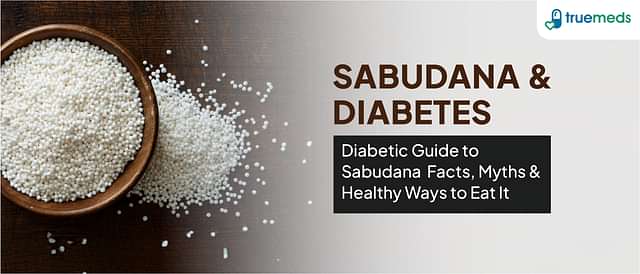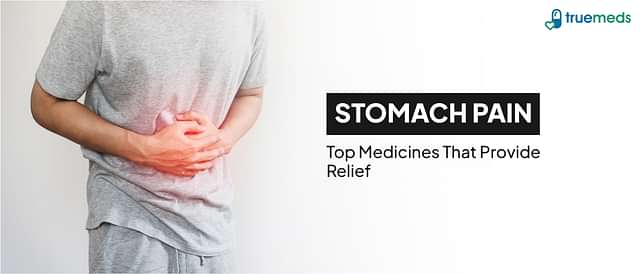Hiatal hernia: Overview, causes, symptoms and treatment
Last updated on : 05 Mar, 2024
Read time : 6 min
What is Hiatal hernia?
When the top region of your stomach bulges through the big muscle that separates your abdomen and chest, you have a hiatal hernia (diaphragm). The hiatus is the opening, hence this ailment is also known as a hiatus hernia.
Your food tube (oesophagus) travels through a small opening (hiatus) in your diaphragm before connecting to your stomach. The stomach rises up through that opening and into your chest in a hernia hiatus.
A minor hiatal hernia is normally unproblematic. You may be unaware you have one unless your doctor sees it while checking for another issue.
A significant hernia hiatus, on the other hand, can cause food and acid to back up into your oesophagus, causing heartburn. Hiatal hernia symptoms are frequently relieved by self-care or medication. A serious hernia hiatus may necessitate surgery.
Types
Sliding Hiatal hernias and fixed, or paraesophageal, hernias are the two most common forms of hernia hiatus.
- Sliding hiatal hernia
The most prevalent type of hernia hiatus is this one. This causes your stomach and oesophagus to slip into and out of your chest. Sliding hernias are often tiny. They don’t normally create any symptoms. It’s possible that they won’t need to be treated.
- Fixed hiatal hernia
This is a less prevalent kind of hernia. A paraesophageal hernia is another name for it. Part of your stomach pushes through your diaphragm and stays there in a fixed hernia. The majority of cases aren’t life-threatening. However, there’s a chance that your stomach’s blood supply will be cut off. It’s a medical emergency if this happens since it could cause catastrophic injury.
Causes of Hernia hiatus
Many Hiatal hernias aren’t known to have a specific cause. Injury or other damage to muscular tissue might weaken it in certain persons. Your stomach will be able to push through your diaphragm as a result of this.
Another cause is placing too much pressure on the muscles around your stomach (on a regular basis). This can occur if:
- Coughing
- Vomiting
- Straining during a bowel movement
- Heavy lifting
- Physical strain
Some people are born with a disproportionately large hiatus. This allows the stomach to pass past it more easily.
A hernia hiatus can be caused by a number of factors, including:
- obesity
- ageing
- smoking
A hiatal hernia can occur for a variety of reasons. A hernia hiatus can happen during pregnancy, if you’re fat, or if you have too much fluid in your abdomen.
Hiatal hernia symptoms
Many people who have this condition do not experience any hernia symptoms. Some symptoms of hiatal hernia are similar to those of gastroesophageal reflux disease (GERD). GERD is caused by the reflux of digestive juices from the stomach into the oesophagus. Hernia symptoms include:
Also Read-Rheumatoid arthritis: Overview, symptoms and causes
- Heartburn
- In the back of the throat, there is a bitter or sour taste
- Bloating and belching are common side effects
- Pain or discomfort in the stomach or oesophagus
Despite the fact that there appears to be a relationship between hernia hiatus and GERD, neither ailment appears to cause the other. Many people have a hiatal hernia but not GERD, and some people have GERD but no hiatal hernia.
Chest pain is another sign of a hernia hiatus. Because chest discomfort can be an indication of a heart attack, it’s critical to contact your doctor or go to the emergency department if you have any chest pain.
Diagnosis of Hernia hiatus
- Barium X-ray
Before having an X-ray, your doctor may have you consume a liquid containing barium. The upper digestive tract is clearly visible on this X-ray. The imaging allows your doctor to see where your stomach is located. You have a hernia hiatus if it protrudes through your diaphragm.
- Endoscopy
An endoscopy may be performed by your doctor. A tiny tube will be inserted into your throat and passed down to your oesophagus and stomach by him. Your doctor will be able to tell if your stomach is pushing through your diaphragm at this point. Any strangling or restriction will be seen as well if you have hernia symptoms.
- Oesophageal manometry
When you swallow, this test monitors the rhythmic muscular contractions in your oesophagus. The coordination and force exerted by the muscles of your oesophagus are also measured using oesophagal manometry.
- pH Test
This test determines how acidic your oesophagus is to determine hernia symptoms.
Hiatal hernia treatment
- Medications
If you have heartburn or acid reflux, your doctor may suggest that you:
- Antacids that neutralize stomach acid Antacids like Mylanta, Rolaids, and Tums may help you feel better quickly. Some antacids might induce negative effects such as diarrhoea or kidney problems if taken too often.
- Medications to reduce acid production Cimetidine, famotidine, and nizatidine are some examples of H-2-receptor blockers.
- Drugs are used to heal the oesophagus by blocking the production of acid.
- Proton pump inhibitors are more powerful acid blockers than H-2 receptor blockers, giving damaged oesophagal tissue more time to repair. Lansoprazole and omeprazole are two proton pump inhibitors available over-the-counter.
- Surgery
- A hiatal hernia treatment may necessitate surgery in some cases. Surgery is usually reserved for those who haven’t found relief from drugs for heartburn and acid reflux, or who have complications such as severe inflammation or oesophagal constriction.
- A hernia hiatus can be repaired with surgery that involves drawing your stomach down into your abdomen, reducing the size of the opening in your diaphragm, or reconstructing an oesophagal sphincter. Hiatal hernia surgery may be paired with weight-loss surgery, such as a sleeve gastrectomy, in some circumstances.
- A single incision in your chest wall (thoracotomy) or a minimally invasive procedure called laparoscopy can be used to do surgery. A tiny camera and sophisticated surgical tools are inserted through many small incisions in your abdomen during laparoscopic surgery. The procedure is then carried out as your surgeon watches images from within your body on a television monitor.
- Lifestyle modifications and Home remedies
Hernia symptoms can be alleviated by making some lifestyle modifications. They are as follows:
- After you eat, don’t exercise or lie down for 3 to 4 hours.
- Acidic foods such as orange juice, tomato sauce, and soda should be avoided.
- For the first 2-3 weeks after hiatal hernia treatment, a mashed and soft food diet is recommended.
- Reduce your intake of fried and fatty meals, as well as wine, vinegar, chocolate, and caffeine.
- Smaller meals (four or five modest meals per day) and slower eating are recommended.
- Wearing tight belts or garments that put pressure on your stomach is not a good idea.
- Get rid of the additional pounds.
- Please don’t smoke. Smoking is a potent source of heartburn.
Disclaimer
Our healthcare experts have carefully reviewed and compiled the information presented here to ensure accuracy and trustworthiness. It is important to note that this information serves as a general overview of the topic and is for informational purposes only. It is not intended to diagnose, prevent, or cure any health problem. This page does not establish a doctor-patient relationship, nor does it replace the advice or consultation of a registered medical practitioner. We recommend seeking guidance from your registered medical practitioner for any questions or concerns regarding your medical condition.
Popular Articles
Recommended Articles
Recent Articles
Top-Selling Medicines:
...View more
Top-Selling OTC:
...View more
Subscribe
Registered Office Address
Grievance Officer
Download Truemeds

Contact Us
Our customer representative team is available 7 days a week from 9 am - 9 pm.
v3.7.5
Our Payment Partners























































